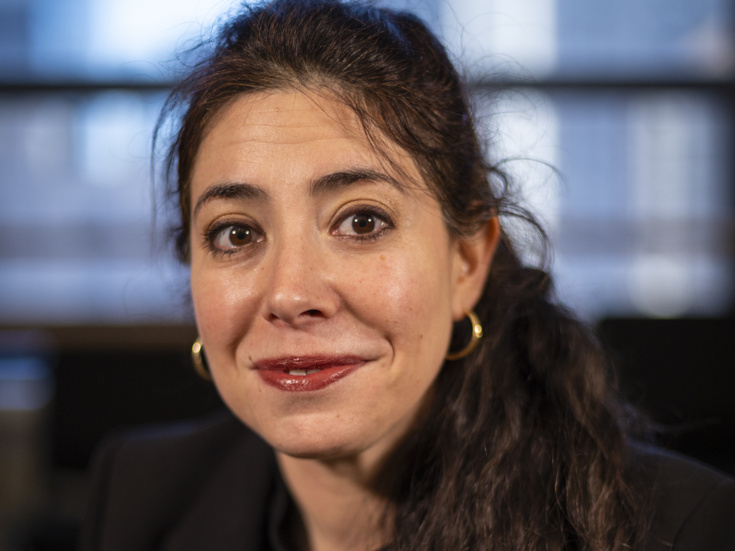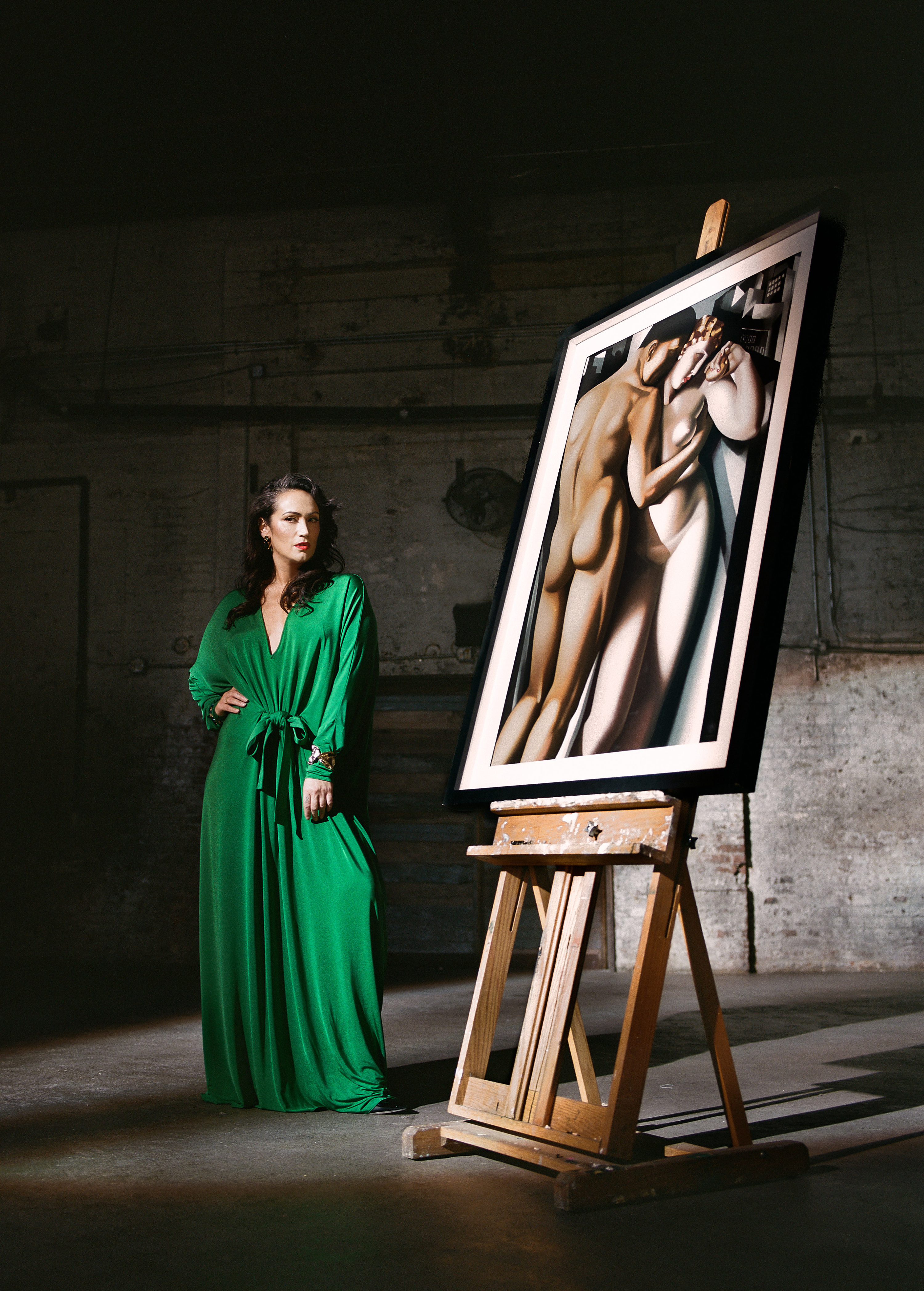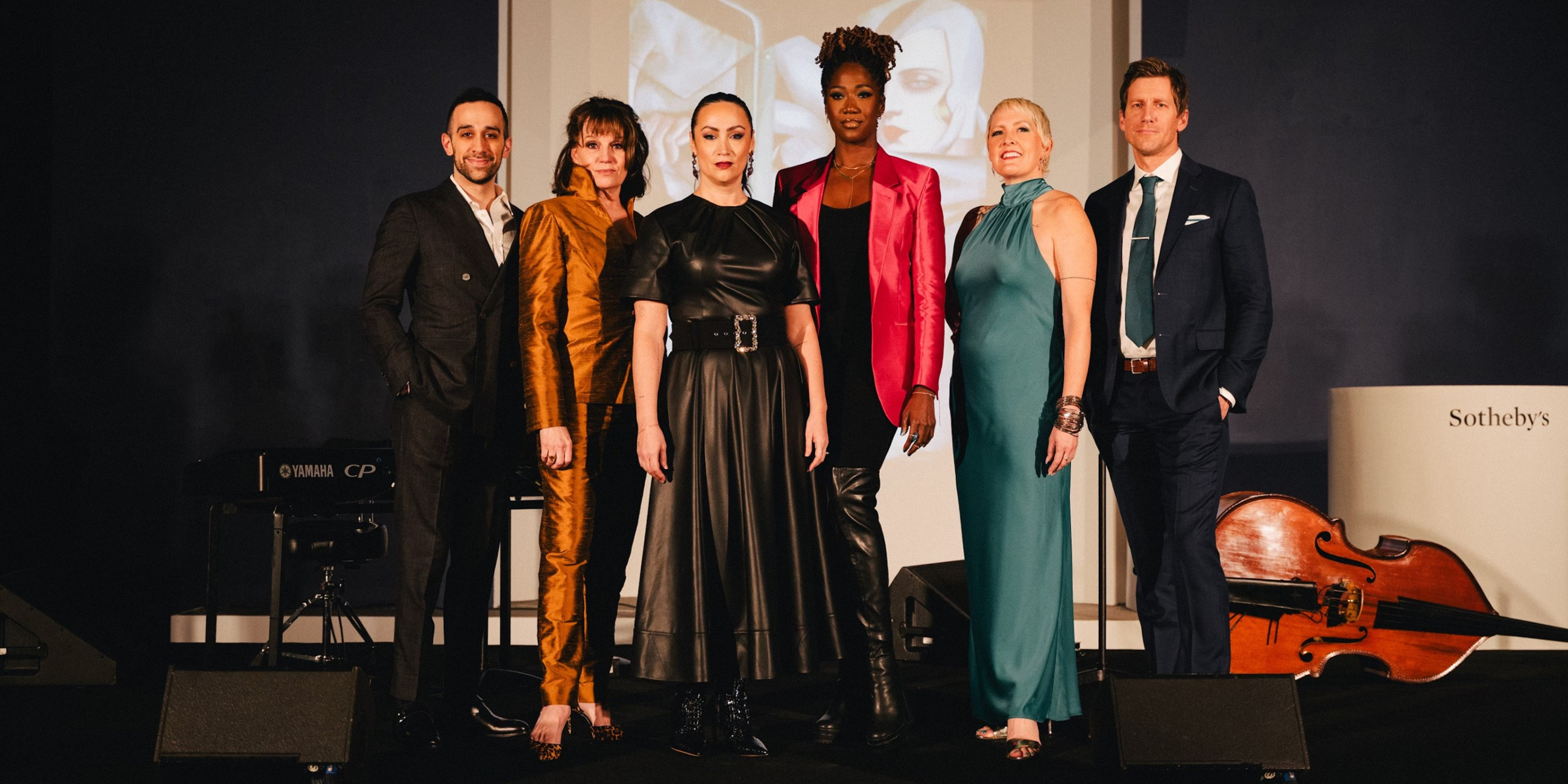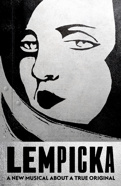Spring Preview: Rachel Chavkin on the ‘Ferocious,’ ‘Divine’ and ‘Aesthetically Spectacular’ Lempicka

(Photo by Luis Ferrá for Broadway.com)
The sexy and unsmiling glamor of Tamara de Lempicka’s paintings is exponentially more recognizable than her name. Her work famously set the mood for Madonna’s 1990 “Vogue” music video, directed with stark angularity by David Fincher. And who hasn’t seen her impossibly chic self-portrait in the Green Bugatti?
The characters in Lempicka’s paintings are cool and aloof—a huge part of their appeal. But just as Stephen Sondheim and James Lapine identified the fault lines within Georges Seurat’s pointillistic perfectionism in Sunday in the Park With George, Matt Gould (music and book) and Carson Kreitzer (lyrics and book) are digging for dimension beneath the sleek art deco façade in their new musical Lempicka, opening on Broadway this spring under the directorial eye of Rachel Chavkin.

“Like any great character, Tamara has such incredible qualities of charisma, ambition, longing, desire,” says Chavkin to Broadway.com Managing Editor Beth Stevens for The Broadway Show. It’s a description that jells with the sensuality of Lempicka’s works—many of which were female nudes—while also belying their images of unflappability. But Chavkin, an experienced interpreter of new musicals, has been chipping away at Lempicka (as has its title star Eden Espinosa) since its 2018 world premiere at Williamstown Theatre Festival. And as the director who helped turn the Imperial Theatre into a Russian supper club for Natasha, Pierre & the Great Comet of 1812 and won a Tony for her moody and intimate rendering of the Underworld in Hadestown, she is once again—perhaps more than ever—leaning on her instincts for visual storytelling to capture the many layers of this musical character study.
“Very much in the way of Sunday in the Park with George,” Chavkin says, invoking Lempicka’s theatrical predecessor, “I think you will leave understanding the depths and heights of color and shine and angularity and face that Tamara was capturing over incredibly complex interiors.” These complex interiors were shaped in part by the artist’s experiences fleeing Russia’s Bolshevik revolution with her husband Tadeusz (Andrew Samonsky) and landing in Paris during the creatively and politically charged gap between World War I and World War II. Her complexities, however, were rooted in more than just international politics. “The real Tamara was known for eating food off the naked bodies of both men and women at parties,” Chavkin relates. “There were corners where it was cool and safe in Paris between the wars to be a bisexual woman, but certainly not in the mainstream.”
The show ultimately focuses on Lempicka’s love affair with her muse Rafaela (Amber Iman), a woman depicted as inspiring her work’s greatest contradictions. “She took humans and she made them gods,” Chavkin says of Lempicka’s portraits, simultaneously noting the uniquely human “ferocity” in her subjects’ eyes. Her famed Autoportrait, meanwhile, places a depiction of unvarnished freedom inside manufactured opulence (the green Buggati notoriously never existed). “Tamara in our show, as embodied by Eden, is full of so much yearning and vulnerability and also fire,” Chavkin explains. She may turn her subjects into gods, but if you look closer, you’ll also see how Lempicka “was so moved by humans and their fragilities.”

(Photo: Kevin Doan)
For Chavkin, these nuances in Lempicka’s art feel tied to the concept of épaulement, a deliciously French term she learned from her choreographer Raja Feather Kelly. “The first thing that Raja ever talked to us about was épaulement—so a shoulder,” she explains for the laymen. A dancer, however, would describe épaulement as more than just the movement of a shoulder. It’s the element that turns an aerobic performance into an artistic one—a line into a work of art. “It feels like Tamara's work in a really muscular, elegant way,” says Chavkin, connecting the dots between the variety of visual art forms coming together on stage in Lempicka. “I hope people leave understanding the amount of depth that she hid on her canvases and how that rhymes with what she had to hide in her own life.”
Still, depth isn’t necessarily what stops pop stars like Madonna and Lady Gaga in their tracks when they stumble upon an original Lempicka. “First and foremost, we really wanted to make a show that is as aesthetically spectacular as her work is,” Chavkin says, shaking off any semblance of high-brow art criticism in favor of pure aesthetic enjoyment. After all, the director adds, “she was a woman with flair”—and on one of Lempicka’s canvases, you can have flair, fragility, ferocity and divinity all at the same time.
The Broadway Show Credits: Directed by Zack R. Smith | Producers: Paul Wontorek and Beth Stevens | Senior Producers: Caitlin Moynihan and Lindsey Sullivan | Videographers: Born in Brooklyn, Luis Ferrá, Tyler Ward



